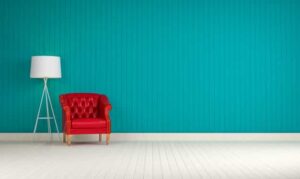If you’re passionate about decorating and always on the lookout for new trends to transform your home, you’ve likely heard of the term “aesthetic.” This concept has become very popular in recent years, especially on social media, and it refers to a coherent and harmonious visual aesthetic. Want to know more? Keep reading.
What Is Aesthetic
The term “aesthetic” comes from the Greek “aisthetikos,” which means perception or sensation. Today, it is used to describe a specific visual style characterized by its coherence and harmony. The aesthetic isn’t limited to a single decoration style; it can encompass a wide range of trends, from vintage to minimalist, and from bohemian to industrial. The key is consistency and the ability to evoke emotions through decorative elements.
Adopting an aesthetic approach in decorating your home means carefully choosing each element, from colors to furniture and accessories, to create a particular atmosphere. This approach focuses on the feeling you want to convey and how the different components of your home complement each other to achieve a cohesive and attractive whole.
Define Your Personal Style
Before you begin decorating your home with an aesthetic approach, it’s crucial to define your personal style. Think about what you like and how you would like your space to feel. Do you prefer a calm and minimalist ambiance, or are you more drawn to an eclectic and colorful style? Are you attracted to natural and organic elements, or do you prefer clean and modern lines?
To define your style, you can create an inspiration board on Pinterest or a scrapbook with images of spaces that attract you. Look at the colors, textures, and furniture that repeat in your selections and use these references as a guide for your decoration. Defining your personal style will help you make consistent decisions and create an environment that truly reflects who you are.
Consistent Color Palette
One of the most important aspects of the aesthetic is the color palette. Choosing a consistent color palette is essential to achieve a harmonious aesthetic. Opt for a combination of colors that you like and that complements the atmosphere you want to create. You can choose soft and neutral tones for a relaxing atmosphere, or vibrant and contrasting colors for a more dynamic space.
Once you have chosen your color palette, make sure to apply it consistently throughout the decoration. From the walls and furniture to textiles and accessories, every element should fit within the chromatic range you have selected. This will help create a visually cohesive and pleasing space.
Furniture and Accessories with Personality
Furniture and accessories play a crucial role in creating an aesthetic space. Choose pieces that are not only functional but also add character and style to your home. Look for furniture with clean lines and timeless designs that match your color palette and personal style.
Accessories are an excellent way to add personal and unique touches to your decoration. Cushions, rugs, lamps, and decorative objects can transform an ordinary space into one that reflects your personality and style. Don’t be afraid to mix and match different textures and materials to add depth and visual interest.
Play with Textures
Texture is another key element in aesthetic decoration. Mixing different textures can add dimension and richness to your space, making it more interesting and welcoming. Combine materials such as wood, metal, glass, and fabric to create a harmonious balance.
For example, you can combine a soft linen sofa with a rustic wood coffee table and an industrial metal lamp. Adding velvet cushions and a long-haired rug can bring warmth and comfort to the atmosphere. Playing with textures allows you to create a space that is not only visually attractive but also pleasant to the touch.
Adequate Lighting
Lighting is a fundamental component to achieve an aesthetic space. Natural light is always the best option, so make sure to make the most of the windows and natural light sources in your home. Use light curtains that allow light entry and reflect the colors of your palette.
In addition to natural light, artificial lighting is also crucial. Choose lamps and lights that complement your style and provide the right amount of light for each space. Warm and soft lights can create a cozy and relaxing atmosphere, while brighter and cooler lights are perfect for work or study areas.
Finally, don’t forget to add personal details to your decoration. Photographs, travel souvenirs, artwork, and sentimental objects can make your space feel truly yours. These details not only add character and personality but also tell a story about who you are and what is important to you.










